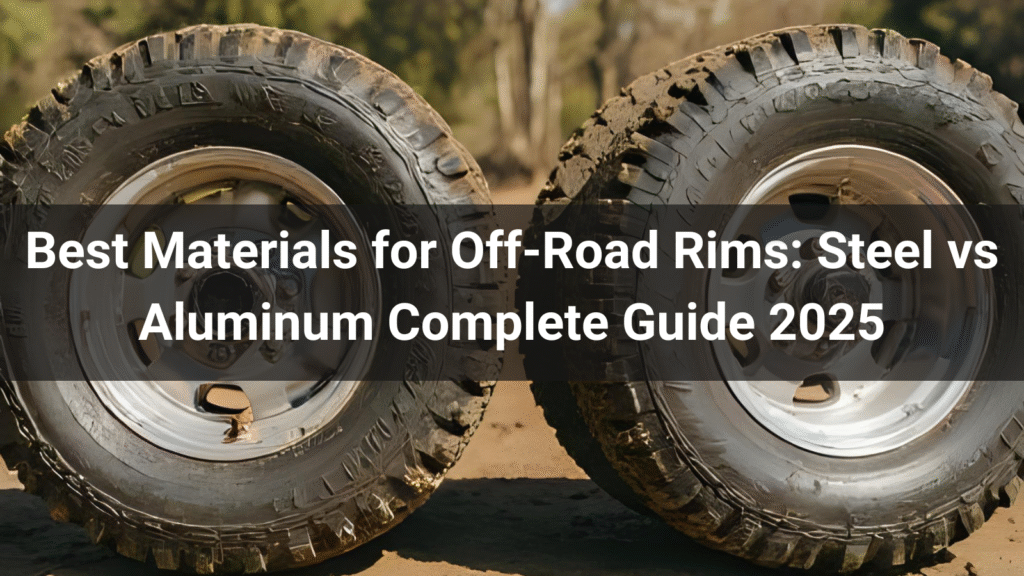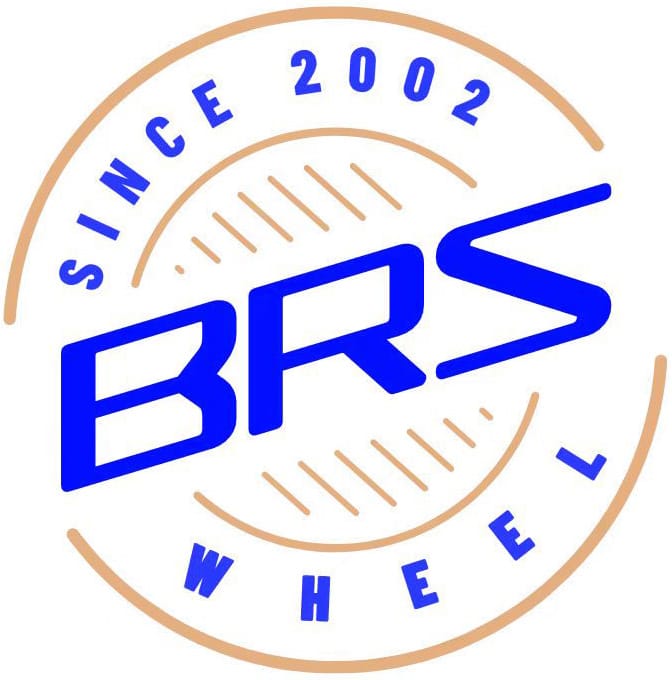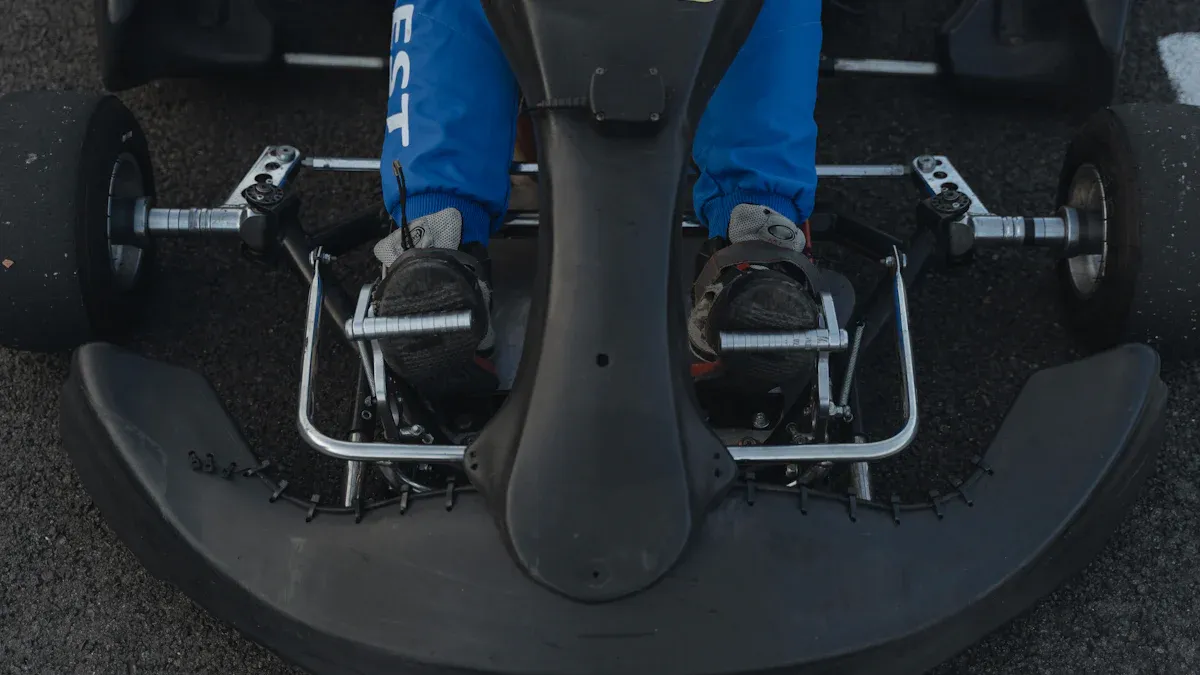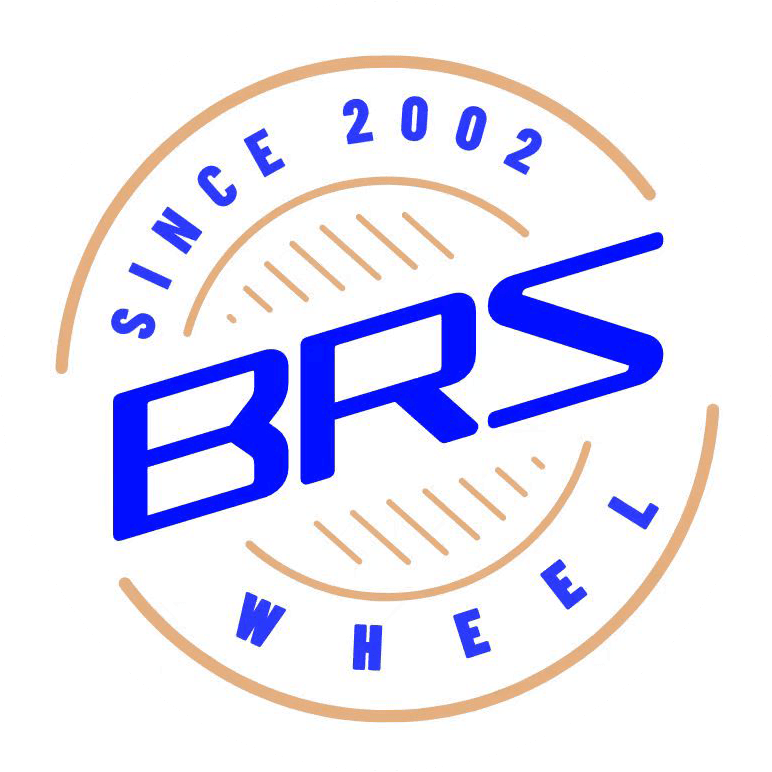
Choosing the right material for off-road rims is crucial for performance, durability, and safety in extreme terrain conditions. This comprehensive guide explores steel versus aluminum options, analyzing strength, weight, cost factors, and real-world applications. Whether you’re tackling rocky trails, muddy paths, or desert terrain, understanding rim materials will help you make informed decisions for your off-road adventures. We’ll examine manufacturing processes, maintenance requirements, and provide expert recommendations based on different off-road scenarios.
Table of Contents
- Understanding Off-Road Rim Materials
- Steel Rims: Ultimate Durability for Extreme Terrain
- Aluminum Alloy Rims: Lightweight Performance Benefits
- Comprehensive Material Comparison Analysis
- Terrain-Specific Material Recommendations
- Manufacturing Quality and Testing Standards
- Maintenance Requirements and Longevity
- Cost-Effectiveness and Value Analysis
- Expert Recommendations by Vehicle Type
- Future Materials and Industry Innovations
Understanding Off-Road Rim Materials

Off-road rim materials fundamentally determine your vehicle’s performance capabilities in challenging terrain. The choice between steel and aluminum alloy affects everything from impact resistance to fuel efficiency, making material selection a critical decision for serious off-road enthusiasts.
Modern off-road rims primarily utilize two materials: high-strength steel and aluminum alloy compositions. Each material offers distinct advantages depending on your specific off-road requirements, vehicle type, and budget considerations. Understanding these materials’ molecular structure and manufacturing processes helps explain their performance characteristics.
Steel rims typically feature carbon steel construction with precise carbon content controlling strength and flexibility. The manufacturing process involves hot rolling, forming, and welding techniques that create robust wheel structures capable of withstanding extreme impacts. Aluminum alloy rims use various aluminum compositions, often including magnesium, silicon, and other elements to enhance specific properties.
| Material Property | Steel Rims | Aluminum Alloy Rims |
|---|---|---|
| Density | 7.85 g/cm³ | 2.70 g/cm³ |
| Tensile Strength | 400-600 MPa | 200-400 MPa |
| Impact Resistance | Excellent | Good |
| Corrosion Resistance | Moderate (with coating) | Excellent |
Steel Rims: Ultimate Durability for Extreme Terrain
Steel rims represent the gold standard for extreme off-road applications where durability trumps weight considerations. Their superior impact resistance makes them ideal for rock crawling, harsh trail conditions, and heavy-duty applications where rim damage could strand you miles from civilization.
The manufacturing process for quality steel rims involves precision engineering that begins with high-grade raw steel selection. At Ningbo BRS Auto Parts Co., Ltd, we transform premium raw steel through advanced cutting technology, ensuring every wheel meets exacting durability standards. Our precision shot blasting process creates smooth surfaces while enhancing coating adhesion, resulting in superior corrosion resistance.
Steel’s malleability provides a crucial advantage in off-road scenarios. When impacted by rocks or debris, steel rims tend to bend rather than crack, allowing for field repairs that can get you home safely. This characteristic proves invaluable during extended off-road expeditions where professional repair services aren’t available.
Heavy-duty applications particularly benefit from steel construction. Steel wagon wheels demonstrate proven reliability in agricultural and commercial off-road vehicles, where consistent performance under extreme loads is essential.
Modern steel rim manufacturing incorporates advanced metallurgy techniques that optimize strength-to-weight ratios. While inherently heavier than aluminum alternatives, contemporary steel rims achieve remarkable durability improvements without excessive weight penalties. The controlled carbon content in quality steel rims provides optimal balance between strength and workability.
Aluminum Alloy Rims: Lightweight Performance Benefits
Aluminum alloy rims excel in applications where weight reduction translates to improved performance, fuel efficiency, and handling characteristics. Their lighter construction reduces unsprung weight, enhancing suspension responsiveness and overall vehicle dynamics on varied terrain.
Advanced aluminum alloy compositions incorporate elements like magnesium, silicon, and copper to enhance specific performance characteristics. These alloys achieve impressive strength-to-weight ratios while maintaining excellent corrosion resistance, particularly important in coastal or humid environments where steel rims might struggle.
Heat dissipation represents another significant aluminum advantage. Superior thermal conductivity helps manage brake heat more effectively, crucial during long descents or repeated hard braking scenarios common in technical off-road driving. This characteristic extends brake component life and maintains consistent braking performance.
Manufacturing flexibility allows aluminum rims to incorporate complex designs and intricate spoke patterns impossible with steel construction. These design possibilities enable optimized weight distribution and enhanced aesthetics while maintaining structural integrity for off-road applications.
However, aluminum’s characteristics require careful consideration for extreme applications. While offering excellent fatigue resistance under normal conditions, aluminum can fail catastrophically under severe impacts, potentially leaving you stranded in remote locations where steel wheels would simply bend and remain functional.
Comprehensive Material Comparison Analysis

Direct material comparison reveals distinct performance profiles that suit different off-road applications. Understanding these differences helps match rim material to specific use cases, terrain types, and performance priorities.
| Performance Factor | Steel Rims | Aluminum Alloy Rims | Winner |
|---|---|---|---|
| Impact Resistance | Superior | Good | Steel |
| Weight | Heavy | Light | Aluminum |
| Cost | Lower | Higher | Steel |
| Corrosion Resistance | Moderate | Excellent | Aluminum |
| Repairability | Excellent | Limited | Steel |
| Heat Dissipation | Moderate | Excellent | Aluminum |
Real-world testing reveals performance nuances not apparent in laboratory conditions. Steel rims consistently outperform aluminum in high-impact scenarios, demonstrating superior resistance to rim damage from rock strikes, pothole impacts, and general abuse common in aggressive off-road driving.
Aluminum’s weight advantage becomes most apparent in vehicles with significant unsprung weight, where every pound reduction improves suspension performance and vehicle responsiveness. This advantage particularly benefits vehicles used for mixed on-road and off-road applications where handling characteristics matter.
Fatigue resistance testing shows aluminum excelling in cyclic loading conditions typical of highway driving, while steel demonstrates superior performance under random, high-magnitude impacts characteristic of extreme off-road environments.
Terrain-Specific Material Recommendations
Different terrain types demand specific rim material characteristics, making terrain-specific recommendations essential for optimal performance and safety. Understanding how materials perform in various conditions guides appropriate selection.
Rocky terrain presents the most challenging conditions for rim materials. Sharp rocks, boulder impacts, and irregular surfaces create high-stress scenarios where steel’s superior impact resistance proves invaluable. Rally car wheels demonstrate how steel construction withstands punishment from rough terrain while maintaining structural integrity.
Muddy conditions favor aluminum rims due to their superior corrosion resistance and easier cleaning characteristics. Aluminum’s non-porous surface resists mud adhesion better than steel, simplifying maintenance and preventing long-term corrosion issues in consistently wet environments.
Sandy desert terrain creates unique challenges including heat buildup and abrasive particle exposure. Aluminum’s superior heat dissipation properties help manage thermal stress, while both materials handle sand abrasion adequately with proper protective coatings.
Technical rock crawling absolutely demands steel construction. The ability to absorb massive impacts without catastrophic failure makes steel the only viable choice for serious rock crawling applications where rim failure could result in dangerous situations.
| Terrain Type | Recommended Material | Primary Benefit | Key Consideration |
|---|---|---|---|
| Rocky Trails | Steel | Impact Resistance | Weight Penalty |
| Muddy Terrain | Aluminum | Corrosion Resistance | Impact Vulnerability |
| Desert Sand | Aluminum | Heat Dissipation | Cost Premium |
| Mixed Terrain | Steel | Versatility | Fuel Economy |
Manufacturing Quality and Testing Standards
Manufacturing quality significantly impacts rim performance regardless of base material selection. Understanding quality indicators and testing standards helps identify superior products that deliver reliable off-road performance.
At Ningbo BRS Auto Parts Co., Ltd, established in 2002 as China’s earliest automobile steel wheel manufacturer, we’ve developed comprehensive quality control processes spanning raw material selection through final testing. Our facility employs over 10 professional technicians specializing in 2D, 3D, and CAE analysis, ensuring every wheel meets stringent performance standards.
Advanced manufacturing techniques include precision shot blasting processes that enhance surface quality and coating adhesion. This treatment improves corrosion resistance while creating optimal surface conditions for paint and protective coatings. Our full-automatic electric coated painting lines ensure consistent, durable finishes that withstand harsh off-road environments.
Comprehensive testing protocols validate rim performance under extreme conditions. Our dedicated wheel testing laboratory conducts impact testing, fatigue analysis, and load testing that simulates years of off-road use. These tests identify potential failure modes before products reach customers, ensuring reliable performance in demanding applications.
Quality steel selection forms the foundation of superior rim performance. Premium raw steel with controlled carbon content and minimal impurities creates the optimal base material for off-road applications. Precision cutting technology ensures dimensional accuracy while maintaining material integrity throughout the manufacturing process.
Maintenance Requirements and Longevity
Maintenance requirements vary significantly between rim materials, affecting long-term ownership costs and performance reliability. Understanding these differences helps optimize maintenance schedules and extend rim service life.
Steel rims require regular inspection for corrosion, particularly around welded joints and areas where protective coatings may be compromised. However, their robust construction tolerates neglect better than aluminum alternatives, making them ideal for applications where consistent maintenance isn’t feasible.
Protective coating maintenance proves crucial for steel rim longevity. Regular cleaning, inspection, and touch-up of damaged areas prevents corrosion that could compromise structural integrity. Quality powder coating or paint systems significantly extend service life when properly maintained.
Aluminum rims demand different maintenance approaches focused on preventing galvanic corrosion and maintaining surface finish. Their natural corrosion resistance reduces maintenance requirements, but specialized cleaning products help maintain appearance and prevent buildup of brake dust and road debris.
Field repair capabilities favor steel construction significantly. Steel wheel painting techniques enable field touch-up repairs that extend service life and maintain protection against corrosion. Simple tools can straighten bent steel rims, while aluminum damage typically requires professional repair or replacement.
Cost-Effectiveness and Value Analysis
Total cost of ownership extends beyond initial purchase price to include maintenance, repair costs, and service life considerations. Comprehensive cost analysis reveals the true value proposition of different rim materials for off-road applications.
Initial purchase costs generally favor steel construction, with quality steel rims typically costing 30-50% less than comparable aluminum alternatives. This cost advantage becomes more pronounced for larger rim sizes and specialized off-road configurations where aluminum manufacturing complexity increases significantly.
Service life analysis shows steel rims often outlasting aluminum alternatives in harsh off-road conditions. While aluminum may offer superior longevity in highway applications, off-road impacts and abuse typically favor steel’s superior damage tolerance and repairability.
Repair cost considerations significantly impact long-term value. Steel rim damage often requires simple straightening or welding repairs costing a fraction of rim replacement. Aluminum damage frequently necessitates complete replacement, particularly for structural damage that compromises safety.
Fuel economy impacts from weight differences create ongoing operational costs. Aluminum’s weight advantage can improve fuel economy by 1-3%, depending on vehicle type and driving conditions. Over extended service life, these savings may offset higher initial costs for highway-focused applications.
| Cost Factor | Steel Rims | Aluminum Rims | 5-Year Total |
|---|---|---|---|
| Initial Cost | $400 | $600 | – |
| Maintenance | $100 | $75 | – |
| Repairs | $150 | $300 | – |
| Fuel Savings | $0 | $200 | – |
| Total | $650 | $775 | $125 Difference |
Expert Recommendations by Vehicle Type
Vehicle-specific recommendations optimize rim material selection based on intended use, vehicle characteristics, and performance priorities. Understanding these recommendations helps match materials to specific applications effectively.
Heavy-duty trucks and commercial vehicles benefit most from steel rim construction. The superior load-bearing capacity and damage tolerance make steel the logical choice for vehicles subjected to harsh working conditions and heavy loads. Truck rim selection considerations emphasize durability and reliability over weight savings.
Sport utility vehicles used for mixed on-road and off-road applications may benefit from aluminum construction, particularly when highway driving comprises the majority of usage. The improved fuel economy and handling characteristics outweigh the off-road durability disadvantages in these applications.
Dedicated rock crawling and extreme off-road vehicles absolutely require steel construction. The catastrophic failure modes possible with aluminum rims create unacceptable safety risks in extreme applications where rim failure could strand occupants in dangerous situations.
Agricultural and industrial vehicles operating in harsh environments consistently benefit from steel construction. The combination of heavy loads, rough terrain, and minimal maintenance opportunities makes steel the only viable long-term solution for these applications.
Recreational off-road vehicles present the most complex selection scenario, requiring careful consideration of usage patterns, terrain types, and performance priorities. Casual trail riding may accommodate aluminum rims, while serious off-road enthusiasts should prioritize steel construction.
Future Materials and Industry Innovations
Emerging materials and manufacturing technologies promise to expand off-road rim options while addressing current limitations of steel and aluminum construction. Understanding these developments helps anticipate future possibilities and current technology limitations.
Advanced steel alloys incorporating microalloying elements show promise for improved strength-to-weight ratios while maintaining steel’s superior impact resistance. These developments could narrow the weight gap with aluminum while preserving steel’s durability advantages.
Composite materials including carbon fiber and advanced polymer matrices offer potential weight savings exceeding aluminum while providing impact resistance approaching steel levels. However, cost and repairability concerns currently limit their practical application to specialized racing and high-end applications.
Manufacturing process innovations including advanced forming techniques and heat treatment processes continue improving both steel and aluminum rim performance. These developments incrementally enhance material properties while reducing manufacturing costs.
Hybrid construction techniques combining steel and aluminum components could optimize material placement for specific stress patterns. Critical high-stress areas could utilize steel construction while weight-sensitive areas employ aluminum, creating optimal performance compromises.
For current applications, established materials remain the practical choice. Steel construction continues offering unmatched durability for extreme applications, while aluminum provides weight advantages for highway-focused use. Future innovations may expand options, but today’s technology delivers proven performance for off-road applications.
Conclusion
The choice between steel and aluminum off-road rims ultimately depends on your specific application requirements, terrain types, and performance priorities. Steel rims offer superior durability and impact resistance essential for extreme off-road conditions, while aluminum provides weight advantages beneficial for mixed-use applications.
For serious off-road enthusiasts facing challenging terrain, steel construction provides unmatched reliability and field repairability. The proven track record of steel rims in extreme applications makes them the conservative choice for safety-critical scenarios.
As China’s leading steel wheel manufacturer since 2002, Ningbo BRS Auto Parts Co., Ltd combines advanced manufacturing techniques with rigorous quality control to deliver superior off-road rim solutions. Our comprehensive product range and customization capabilities ensure optimal solutions for any off-road application.
Contact our expert team at Ningbo BRS Auto Parts Co., Ltd to discuss your specific off-road rim requirements. With over 200 skilled workers, advanced manufacturing facilities, and comprehensive testing capabilities, we deliver custom solutions that exceed performance expectations while providing exceptional value for demanding off-road applications.
Get Expert Consultation Today
Phone: 0086 19810666863
Email: carrie@brsautoparts.com
WhatsApp: 0086 19810666863
Website: https://brsrim.com/
Working Hours: 8:00 – 21:00 from Monday to Friday
Responses will be provided within 24 hours on holidays






